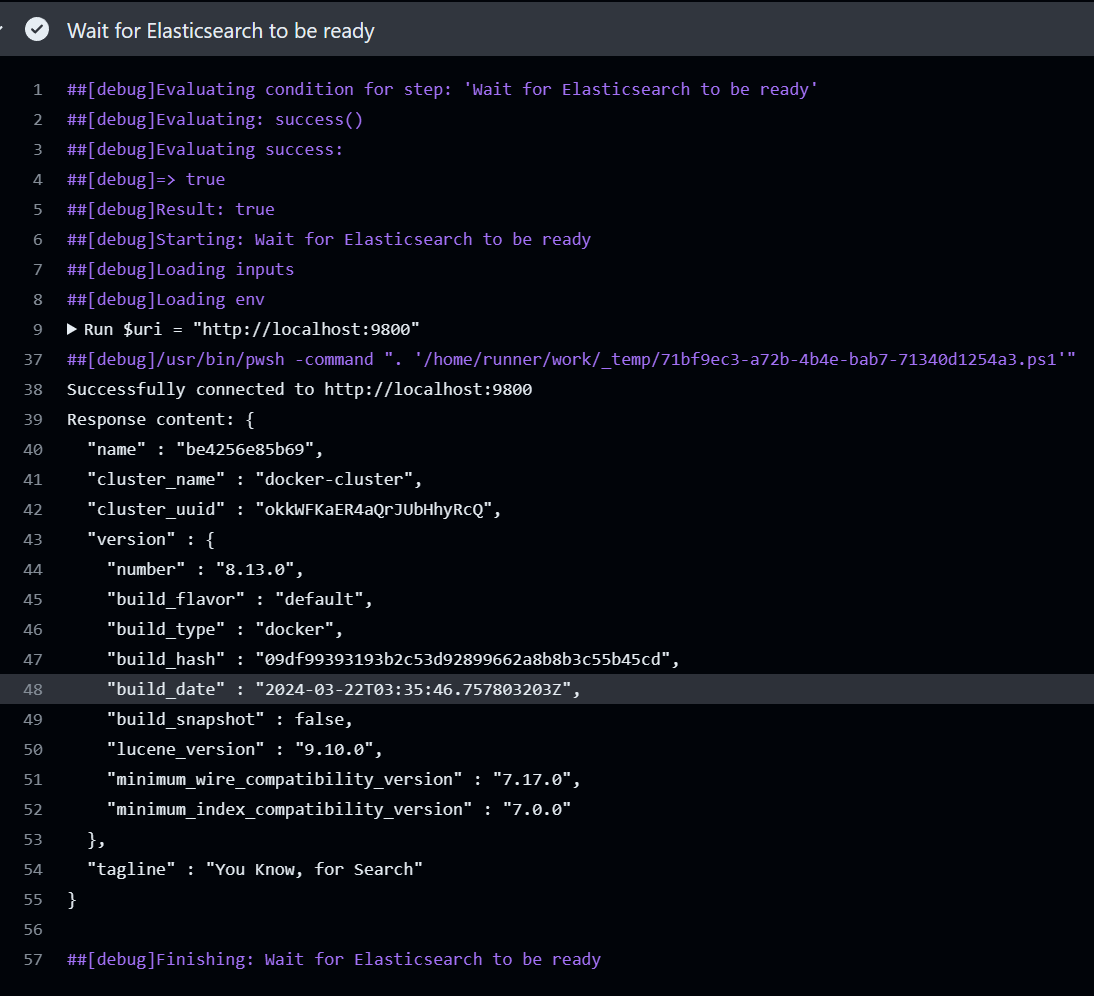GitHub action with ElasticSearch integration tests and SonarCloud
Being able to run integration tests in GitHub actions is a great feature, thanks to services you can run whatever docker image you need to run your integration scripts.
I blogged in the past on how you can Analyze you code with SonarCloud in a GitHub action. Things changed a little in the latest year but in this post I want to examine a different aspect running tests that rely on external service, like ElasticSearch. Running integration test in GH action is a little more complex than running unit tests, because you need to setup the environment but thanks to docker usually this can be done with a little effort.
Lets examine how we can create a GH action to run integration tests that relies on ElasticSearch.
| |
As you can see, before starting to declare job steps, I’ve added a services section where I can specify services that are needed to run this action. In this example I have only one service, called elasticsearch: that is based on the official docker image of ElasticSearch. I’ve also specified that I want to map port 9200 of the container to port 9800 of the host, and I’ve also specified some options to the container.
Thanks to services, I can specify containers that needs to run before my jobs starts. Then you usually need to add some steps that wait for the service to be available. This happens because when the docker instance started, elasticsearch needs some time to become operational. Generic service node has no way to know if its internal service is operative. The result is using a simple step that uses PowerShell core code to wait for the base ElasticSearch url to answer a successful code. This is a matter of few lines of PowerShell code. Since this is powershell code (shell: pwsh) it runs perfectly even on ubuntu machines.
| |
This is what you see when your action runs. As you can see you can also verify basic information about the version of elasticsearch that got deployed. Action runners are quite fast, so I usually do not see wait cycles, but it happened and this simple step makes sure that the service is up and running before running the tests.
 Figure 1: Wait for Elasticsearch action screenshot
Figure 1: Wait for Elasticsearch action screenshot
Now after this action complete, elasticsearch is up and operational, so I can run my PowerShell core script that builds the solution, executes the tests, collect code coverage and so on.
| |
In previous action snippet I have three steps that runs sonarcloud scanning. First two are used to setup everything while the third actually performs the analysis. As you can see all the build is done with a build.ps1 script, where I simply run all dotnet command line tool to build solution and to run the test with the appropriate code coverage. Having everything in a single script tremendously simplify the build process because I can test locally and I can reuse the very same script in other GitHub actions.
Running test in the Build script needs to take care of code coverage if you want to add code coverage to the analysis.
| |
This shows you how flexible GitHub actions are, thanks to services you can run whatever docker image you need to run your integration scripts, just by specifying images and configuration. This is a real lifesaver when you need to run integration tests that rely on databases or external services.
Gian Maria.
